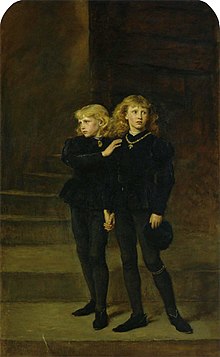SONYA Hartnett is a skilful writer. You can tell immediately when she evokes place so vividly, and she loves words like all good writers do. She is supposedly a ‘Young Adult’ writer, but older adults can learn a lot from her too. Maybe not with all her books- some seem to be written to be placed in the teenage imagination, and get fixed there- but others like the moving story about incest at a caravan park- ‘SLEEPING DOGS’- are so well written and challenging that anyone post- high school would find something in them.

I think ‘THE CHILDREN OF THE KING’ is one of those. The Lockwood’s live in London and they have two teenage children- Cecily a bit silly and selfish is twelve- and Jeremy is a bit older at fourteen and romantic and desperate for adventure. The story is set during the London blitz, and Mr Lockwood stays at home whilst the rest of the family relocate away from the falling bombs to the lovely sounding ‘Heron Hall’, which belongs to Uncle Peregrine and his staff. The Lockwood’s are fabulously wealthy and it is a big house in the safe countryside with a lot of staff helping run it.
On the way to Heron Hall Cecily ‘adopts’ for her family a young evacuee called May Bright and she is the best character in the novel. She runs rings around Cecily who has to grow up in order to keep up with her. She is perfect for Cecily as a role model of selflessness and maturity. Hartnett loves May, you can tell, and as a result we do too.
A place close by with an even better name than ‘Heron Hall’ is ‘Snow Castle’ where the children venture for some excitement. The whole time they are at Heron Hall they have to make their own fun because school is out and there are no other families close by.
This is the part in the story where it becomes more intriguing and complicated. The children venture across two brothers who seem to be living amongst the ruins. They are young and prince-like in their appearance- not to mention ghostly and mysterious. At the same time we meet them, Uncle Peregrine offers his nightly instalments about the Duke and the King and Queen of long ago at the time of Richard III, and the boys trapped in the Tower of London. These night time stories take up a large section of the novel with the children entranced, and meanwhile in the day time the children are running off to Snow Castle. The parallels are supposed to be obvious.

Uncle Peregrine’s long tale about the power hungry Duke and the unfortunate boys kept hidden in the tower is well told and enjoyable. There is another incredible tale told in the novel, this time by Jeremy Lockwood who feels young and useless at Heron Hall, away from his father and the horrific war being waged in London. Jeremy escapes from his suffocating family one night and – this could be partly allegory, I’m not sure- as he tells his expectant audience later, he rescues several people from a bombed out street somewhere in London, who are lying in the rubble under the earth and being slowly engulfed by water.
May is lovely. Intelligent, brave and kind-hearted. Cecily improves, but don’t be fooled by her desire to ‘adopt’ May, the little evacuee near the beginning. She sees May at the evacuee centre sitting next to her suitcase, and is drawn to her silky hair, clean skin and doll-like features as if she is something that might be fun to play with. And that’s how she treats May until May stamps her independence and authority. Jeremy is ok but a bit too precocious for my liking. Besides Uncle Peregrine, the adults don’t fare too well, as they don’t in other Hartnett books, and Harry Potter for that matter.
I enjoyed the novel the most when the girls swept over the hillside and over the stream to visit the boys at Snow Castle. I wanted to know more about them and where they came from. Were they the ghosts of the boys locked in the Tower all those centuries ago?
Here is an example of why Sonya Hartnett can be a very good writer. The physicality of her description, and the imagination, is terrific. On the subject of the aftermath of bombing on a building in a London street:
‘The rubble is ugly. It’s made of chunks of brick, a trillion chips of glass, smashed and splintered timber. All this sprawls over the road, into the gutters, heaps against its neighbours. Caught in the mess is furniture, carpet, birdcages, pots and pans, chests of drawers filled with clothes. Stinking dust floats everywhere, and the dirt ripped up by the impact is thrown over everything. And where the building once stood there’s an odd empty space, and light touches what it never touched before, and sparrows hop along towel rails, and dogs walk on roofs.’

No comments:
Post a Comment